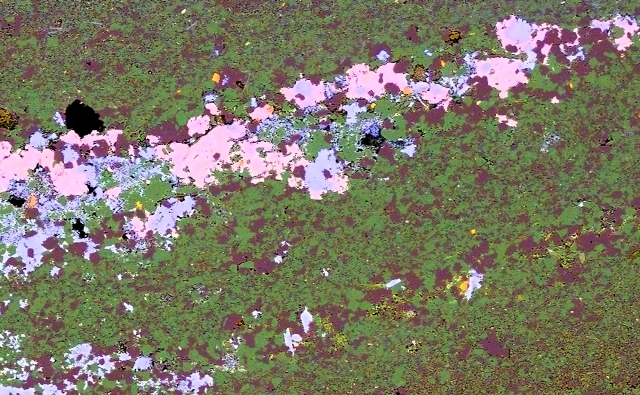Feb 27 2016
CSIRO researchers studied existing drill cores and found that the geology around the McArthur River zinc mine is replicated in older rocks underneath.
 Characterisation image showing mineral 'footprint' pointing to potential zinc deposit.
Characterisation image showing mineral 'footprint' pointing to potential zinc deposit.
It’s evidence that similar geological processes that led to the McArthur River deposit also happened hundreds of millions of years earlier, before the rocks at McArthur River were deposited on top.
Now, junior explorer and study collaborator, Armour Energy , is looking to expand their exploration program to pursue the findings.
Despite the fall in bulk commodity prices overall, shortfalls in zinc supply have meant that demand for the metal remains strong. New zinc discoveries are needed to fill the supply hole and would provide a welcome productivity boost to Australia’s mining and minerals industry.
“We’re focussing our research efforts on under-explored areas, and areas with surface cover, to drive the next wave of discoveries,” CSIRO’s lead study author, Dr Sam Spinks, said.
“We used state-of-the-art x-ray techniques at our Advanced Resources Characterisation Facility to better understand the mineralogy of the rock and then combined this information with geochemical models that show how it formed.
“We haven’t found a deposit yet, but the high zinc concentrations and metal haloes in these rocks are what geologists regard as ‘distal footprints’ to potential metal mineralisation.”
Studying the processes that lead to the formation of deposits is crucial for greenfield exploration.
“This work will lead to more targeted exploration drilling, helping companies save costs while reducing their environmental impact,” Dr Spinks said.
Australia has been a world-renowned zinc producer for over 130 years, but after so many years of continuous mining, production is slowing down – the closure of Century mine last year is a recent close-to-home example.
Study co-author from CSIRO, Dr Susanne Schmid, said zinc is needed for countless products and processes, such as galvanizing steel, as well as advanced technologies.
“Consumption is forecast to increase, but there’s no new mines on the horizon to fill that gap yet.
“It’s critical for us to be active in the space where explorers are operating because they rely on research to be able to vector to targets in their exploration programs,” Dr Schmid said.
Armour Energy engaged CSIRO through the Australian Government’s Innovation Connections program which provided part of the funding and access to their expertise for the project.